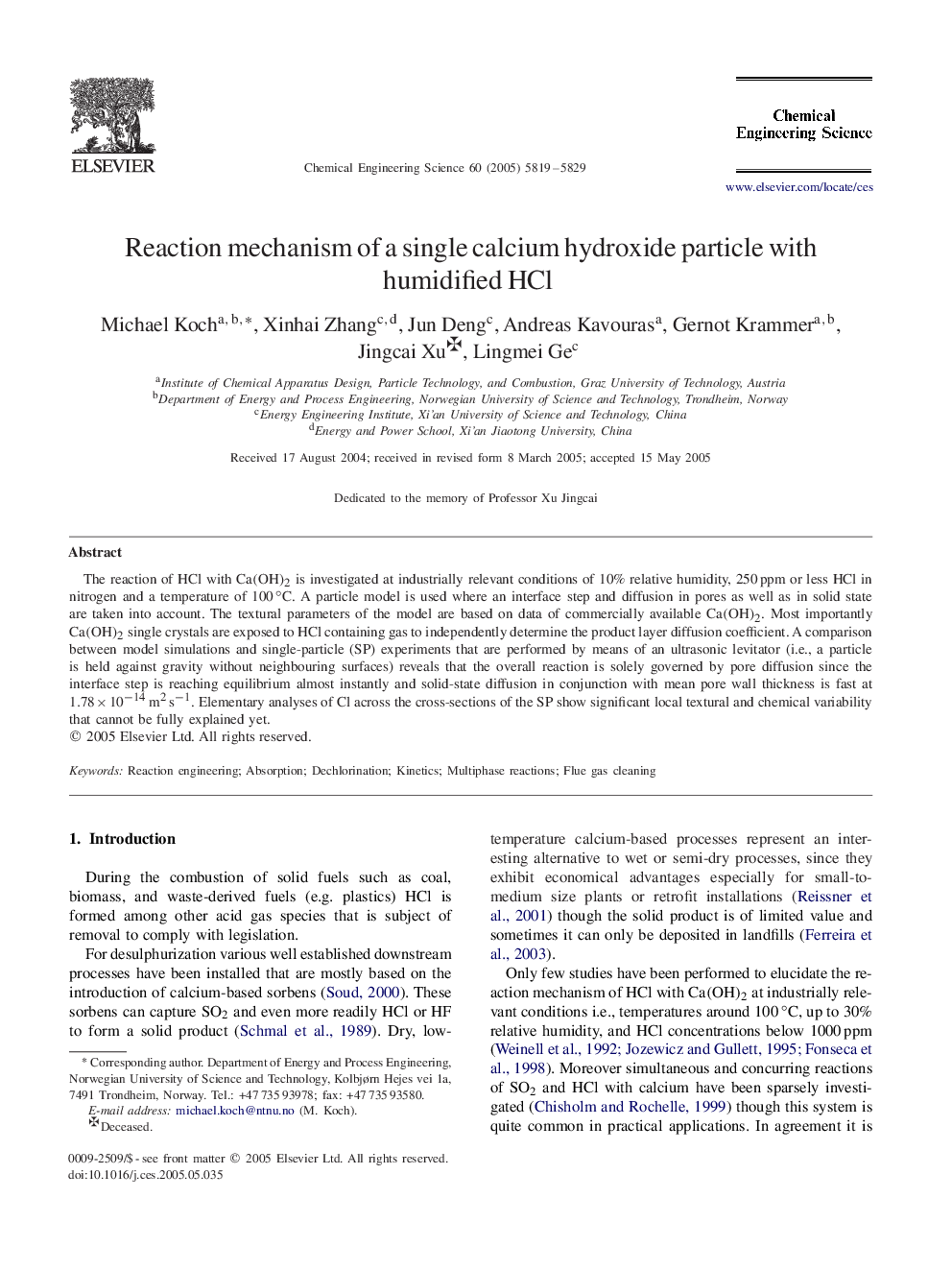| Article ID | Journal | Published Year | Pages | File Type |
|---|---|---|---|---|
| 159430 | Chemical Engineering Science | 2005 | 11 Pages |
The reaction of HCl with Ca(OH)2Ca(OH)2 is investigated at industrially relevant conditions of 10% relative humidity, 250 ppm or less HCl in nitrogen and a temperature of 100 °C. A particle model is used where an interface step and diffusion in pores as well as in solid state are taken into account. The textural parameters of the model are based on data of commercially available Ca(OH)2Ca(OH)2. Most importantly Ca(OH)2Ca(OH)2 single crystals are exposed to HCl containing gas to independently determine the product layer diffusion coefficient. A comparison between model simulations and single-particle (SP) experiments that are performed by means of an ultrasonic levitator (i.e., a particle is held against gravity without neighbouring surfaces) reveals that the overall reaction is solely governed by pore diffusion since the interface step is reaching equilibrium almost instantly and solid-state diffusion in conjunction with mean pore wall thickness is fast at 1.78×10-14m2s-1. Elementary analyses of Cl across the cross-sections of the SP show significant local textural and chemical variability that cannot be fully explained yet.
